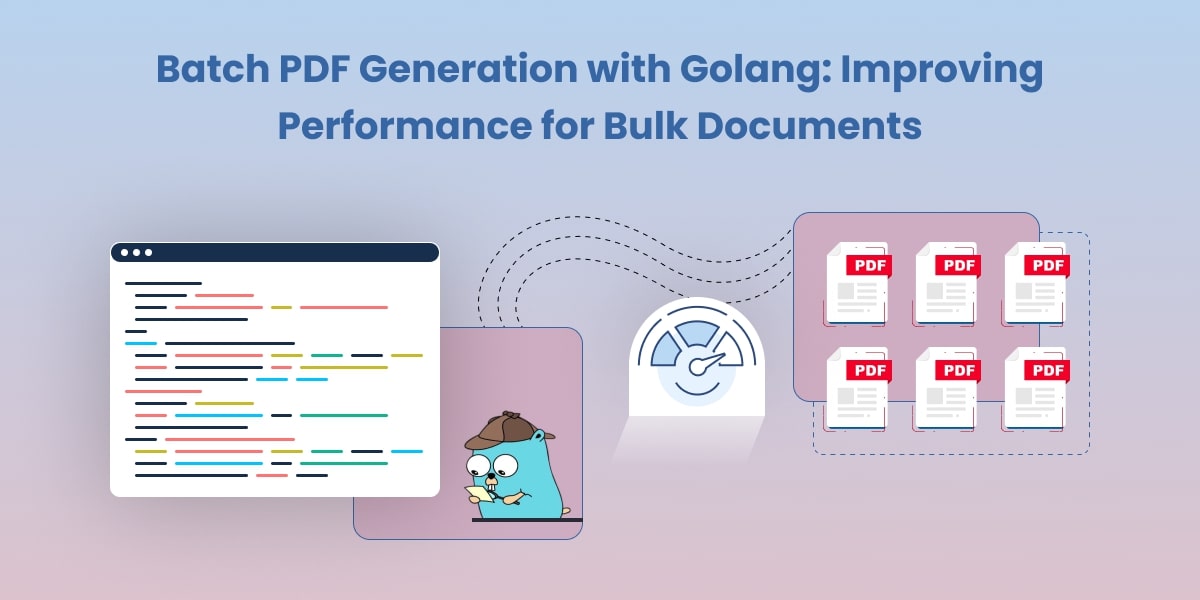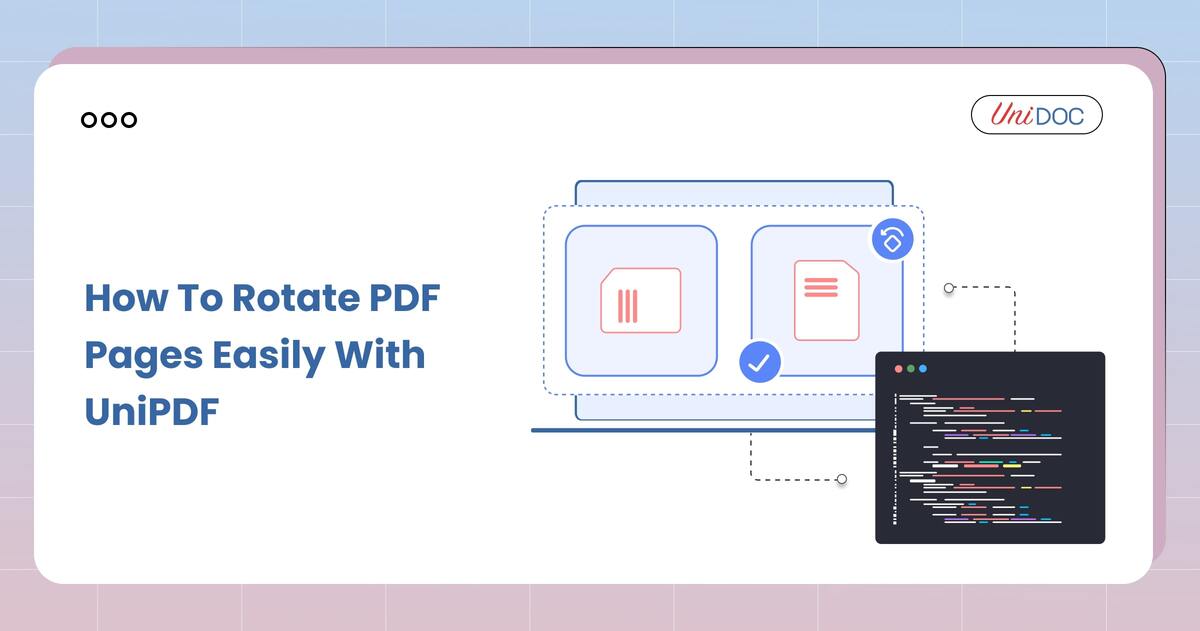PDF Redaction and Golang: Protecting Sensitive Information
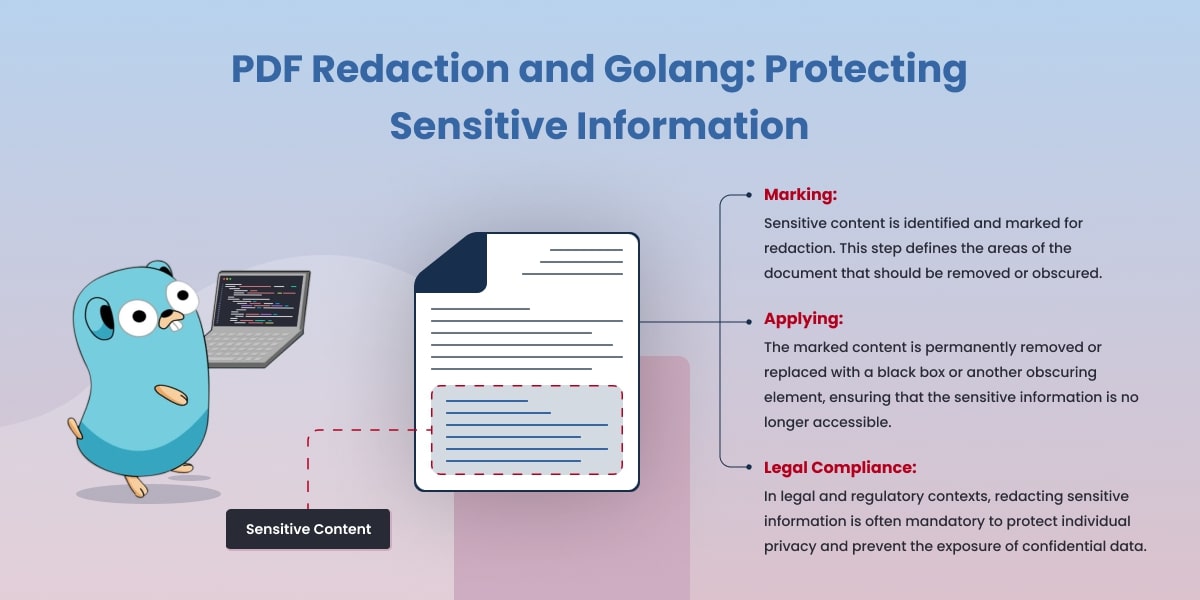
In an era of digital information exchange, safeguarding sensitive data is paramount. PDF documents, often used for sharing reports, legal documents, and confidential information, require robust protection mechanisms to prevent unauthorized access to sensitive content.
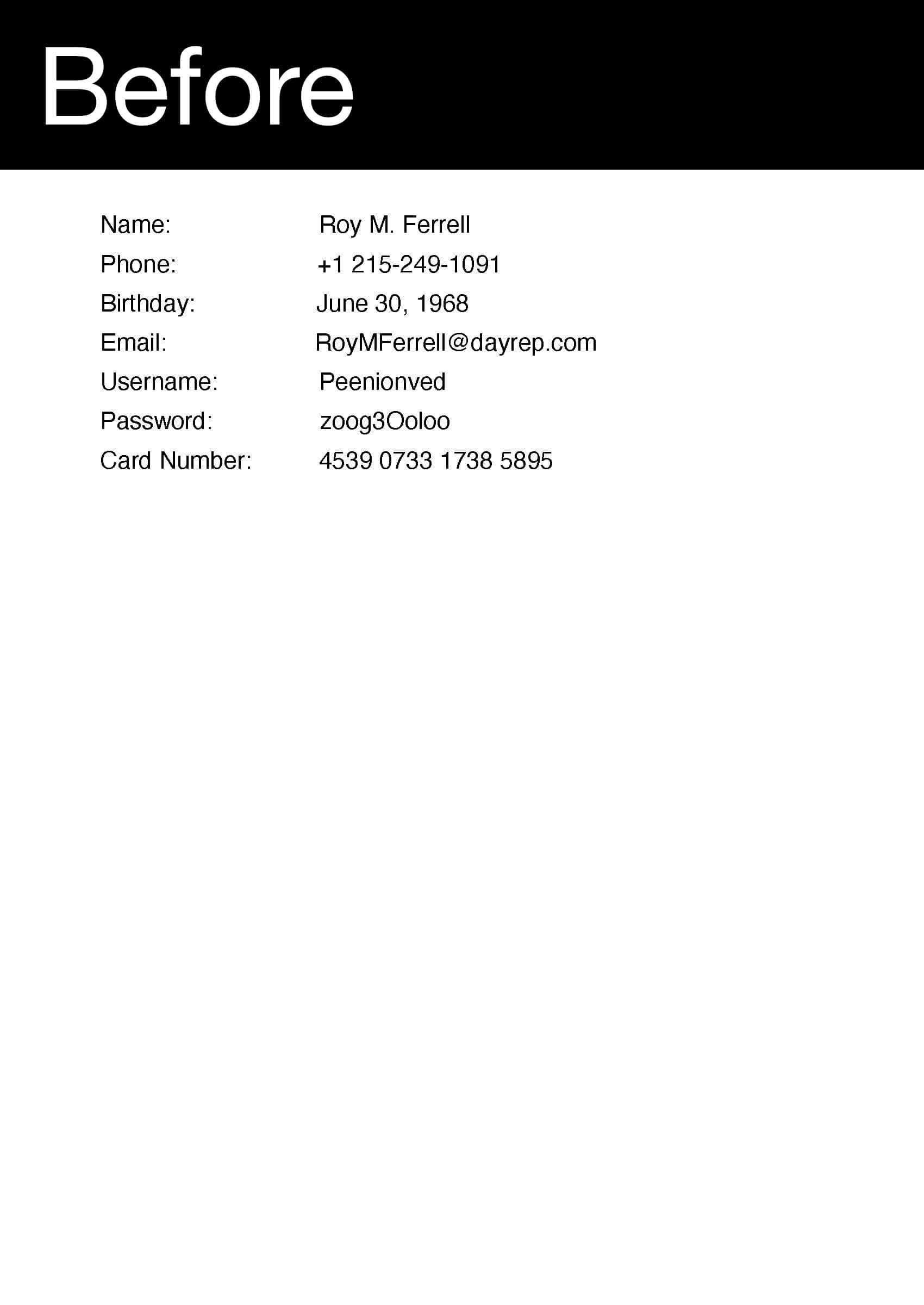
One effective method for achieving this is through PDF redaction. In this blog post, we will explore the concept of PDF redaction and Golang, a powerful programming language, can be leveraged to implement PDF redaction and ensure the security of sensitive information.
Understanding PDF Redaction
PDF redaction is the process of removing or obscuring sensitive or confidential information from a PDF document to prevent it from being disclosed unintentionally. Unlike simply highlighting or covering content, redaction permanently removes the sensitive information from the document, making it unreadable and irretrievable.
Redaction involves two primary steps:
Marking: Sensitive content is identified and marked for redaction. This step defines the areas of the document that should be removed or obscured.
Applying: The marked content is permanently removed or replaced with a black box or another obscuring element, ensuring that the sensitive information is no longer accessible.
Why PDF Redaction is Important
PDF redaction is crucial for various reasons:
Legal Compliance: In legal and regulatory contexts, redacting sensitive information is often mandatory to protect individual privacy and prevent the exposure of confidential data.
Data Privacy: Redacting personally identifiable information (PII) and other sensitive data is essential for ensuring the privacy and security of individuals.
Risk Mitigation: Redaction minimizes the risk of data breaches, leaks, and unintended disclosures that can lead to financial, reputational, and legal consequences.
Document Sharing: When sharing documents with multiple parties, redaction ensures that only the intended information is visible, reducing the risk of unauthorized access.
Golang and PDF Manipulation
Golang, also known as Go, is a versatile programming language known for its simplicity and efficiency. It has gained popularity for various applications, including web development, system programming, and more. For manipulating PDFs, Golang comes packed with libraries, making it straightforward for developers to craft, adjust, and handle PDF documents in code.
One such library is UniPDF, a comprehensive PDF manipulation library for Golang. UniPDF offers a range of features, including text extraction, document merging, encryption, and, importantly, redaction. By utilizing the capabilities of Golang and libraries like UniPDF, developers can automate the process of PDF redaction and enhance the security of sensitive content.
Implementing PDF Redaction and Golang
Setting Up the Golang Environment
Before diving into PDF redaction, you need to set up your Golang environment. Ensure that you have Golang installed on your system and a reliable code editor for development.
Loading and Parsing PDF Documents
To implement PDF redaction, you’ll need a PDF document that contains sensitive information. Start by loading and parsing the PDF document using the chosen Golang PDF library. In the case of UniPDF, you can use its document loading functions to open the PDF file for manipulation.
Identifying Sensitive Content
Before applying redaction, you need to identify the portions of the PDF document that contain sensitive information. This step involves analyzing the document’s content and layout to locate text, images, or other elements that need to be redacted.
Applying Redaction
With the identified sensitive content, you can proceed to apply redaction. In UniPDF, the redaction process involves specifying the areas to be redacted and applying the redaction to the document. This can include removing text, images, or any other elements that should not be visible.
Saving the Redacted PDF
After redacting the sensitive content, you need to save the modified PDF document. The redacted version should not contain any traces of the removed content. The UniPDF library provides functions for saving the modified document to a new file.
Now that we’ve discussed the process, let’s delve into an example of how you can actually redact text in a PDF using Golang. In this sample code, we’ll be using the UniPDF library to find and redact specific patterns like
/*
* Redact text: Redacts text that match given regexp patterns on a PDF document.
*
* Run as: go run redact_text.go input.pdf output.pdf
*/
package main
import (
"fmt"
"os"
"regexp"
"github.com/unidoc/unipdf/v3/common/license"
"github.com/unidoc/unipdf/v3/creator"
"github.com/unidoc/unipdf/v3/model"
"github.com/unidoc/unipdf/v3/redactor"
)
func init() {
// Make sure to load your metered License API key prior to using the library.
// If you need a key, you can sign up and create a free one at https://cloud.unidoc.io
err := license.SetMeteredKey(os.Getenv(`UNIDOC_LICENSE_API_KEY`))
if err != nil {
panic(err)
}
}
func main() {
if len(os.Args) < 3 {
fmt.Printf("Usage: go run redact_text.go inputFile.pdf outputFile.pdf \n")
os.Exit(1)
}
inputFile := os.Args[1]
outputFile := os.Args[2]
// List of regex patterns and replacement strings
patterns := []string{
// Regex for matching credit card number.
`(^|\s+)(\d{4}[ -]\d{4}[ -]\d{4}[ -]\d{4})(?:\s+|$)`,
// Regex for matching emails.
`[a-zA-Z0-9\.\-+_]+@[a-zA-Z0-9\.\-+_]+\.[a-z]+`,
}
// Initialize the RectangleProps object.
rectProps := &redactor.RectangleProps{
FillColor: creator.ColorBlack,
BorderWidth: 0.0,
FillOpacity: 1.0,
}
err := redactText(patterns, rectProps, inputFile, outputFile)
if err != nil {
panic(err)
}
fmt.Println("successfully redacted.")
}
// redactText redacts the text in `inputFile` according to given patterns and saves result at `outputFile`.
func redactText(patterns []string, rectProps *redactor.RectangleProps, inputFile, destFile string) error {
// Initialize RedactionTerms with regex patterns.
terms := []redactor.RedactionTerm{}
for _, pattern := range patterns {
regexp, err := regexp.Compile(pattern)
if err != nil {
panic(err)
}
redTerm := redactor.RedactionTerm{Pattern: regexp}
terms = append(terms, redTerm)
}
pdfReader, f, err := model.NewPdfReaderFromFile(inputFile, nil)
if err != nil {
panic(err)
}
defer f.Close()
// Define RedactionOptions.
options := redactor.RedactionOptions{Terms: terms}
red := redactor.New(pdfReader, &options, rectProps)
if err != nil {
return err
}
err = red.Redact()
if err != nil {
return err
}
// write the redacted document to destFile.
err = red.WriteToFile(destFile)
if err != nil {
return err
}
return nil
}
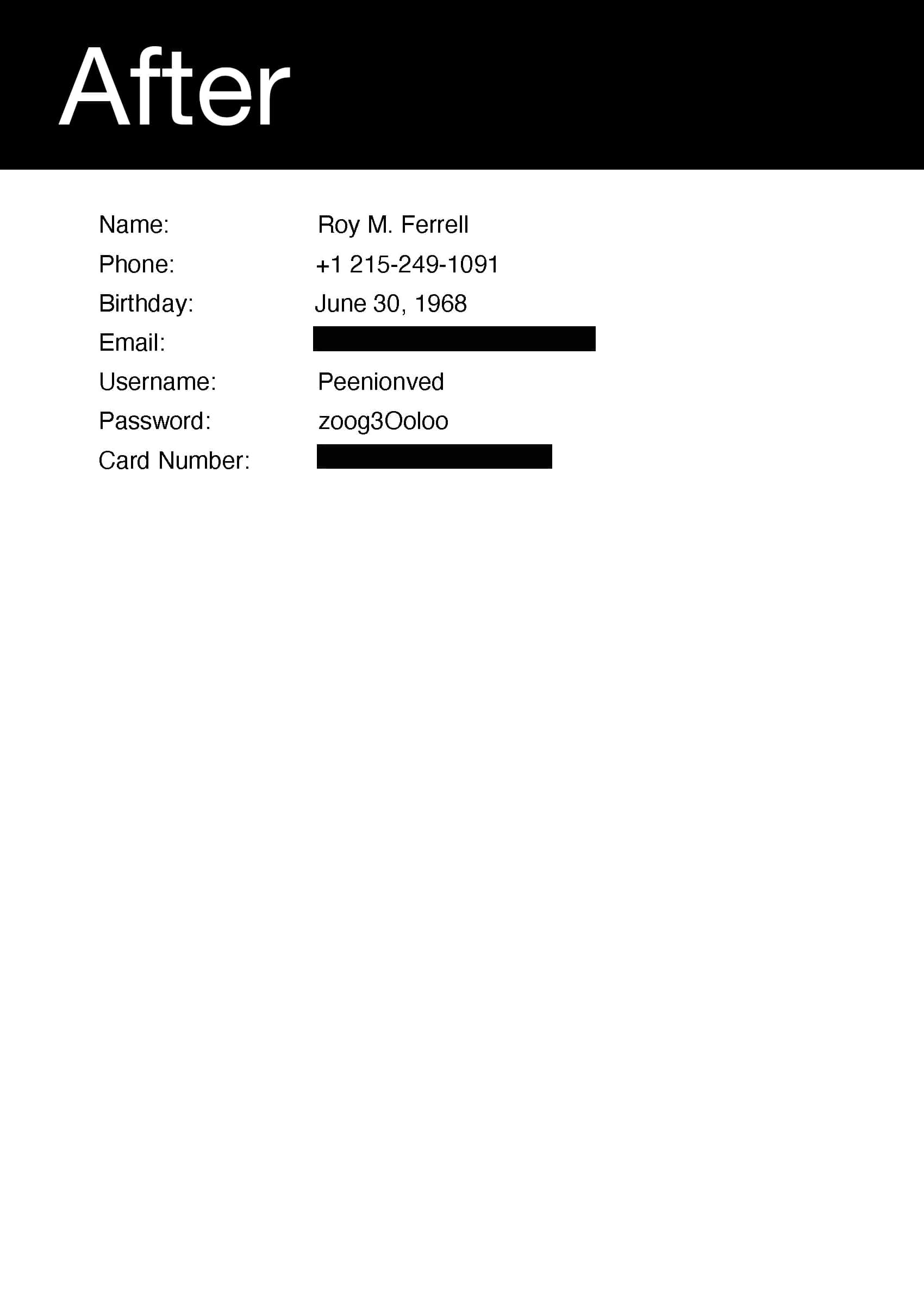
Advanced Redaction Techniques
Batch Redaction
For scenarios where multiple PDF documents require redaction, implementing batch redaction can save time and effort. Batch redaction involves automating the redaction process across a set of PDF documents. This can be achieved by creating a script that loads, redacts, and saves each document sequentially.
Automated Content Detection
Advanced redaction techniques involve automating the detection of sensitive content. This can be achieved using techniques like pattern matching, natural language processing (NLP), and machine learning. By training a model to identify specific types of sensitive information, you can streamline the redaction process.
PDF Redaction Best Practices
To ensure effective and secure PDF redaction, consider the following best practices:
Review Content: Thoroughly review the content before redaction to avoid mistakenly removing important information.
Document Backup: Always create a backup of the original document before applying redaction to ensure you have an unaltered copy.
Audit Trails: Maintain an audit trail of redaction actions, indicating what was redacted and by whom. This is crucial for legal compliance.
Test and Validate: Test the redacted document to ensure that the sensitive content has been properly removed and that the redacted version retains its intended formatting.
Conclusion
PDF redaction and Golang are critical aspects of data protection and privacy, especially in contexts that involve sensitive information and legal compliance. Leveraging the capabilities of Golang and PDF manipulation libraries like UniPDF, developers can automate and streamline the redaction process, enhancing document security and mitigating risks.
By following best practices, thoroughly testing redacted documents, and staying informed about the latest advancements in PDF manipulation, developers can effectively protect sensitive content and maintain the integrity of documents in the digital age.


